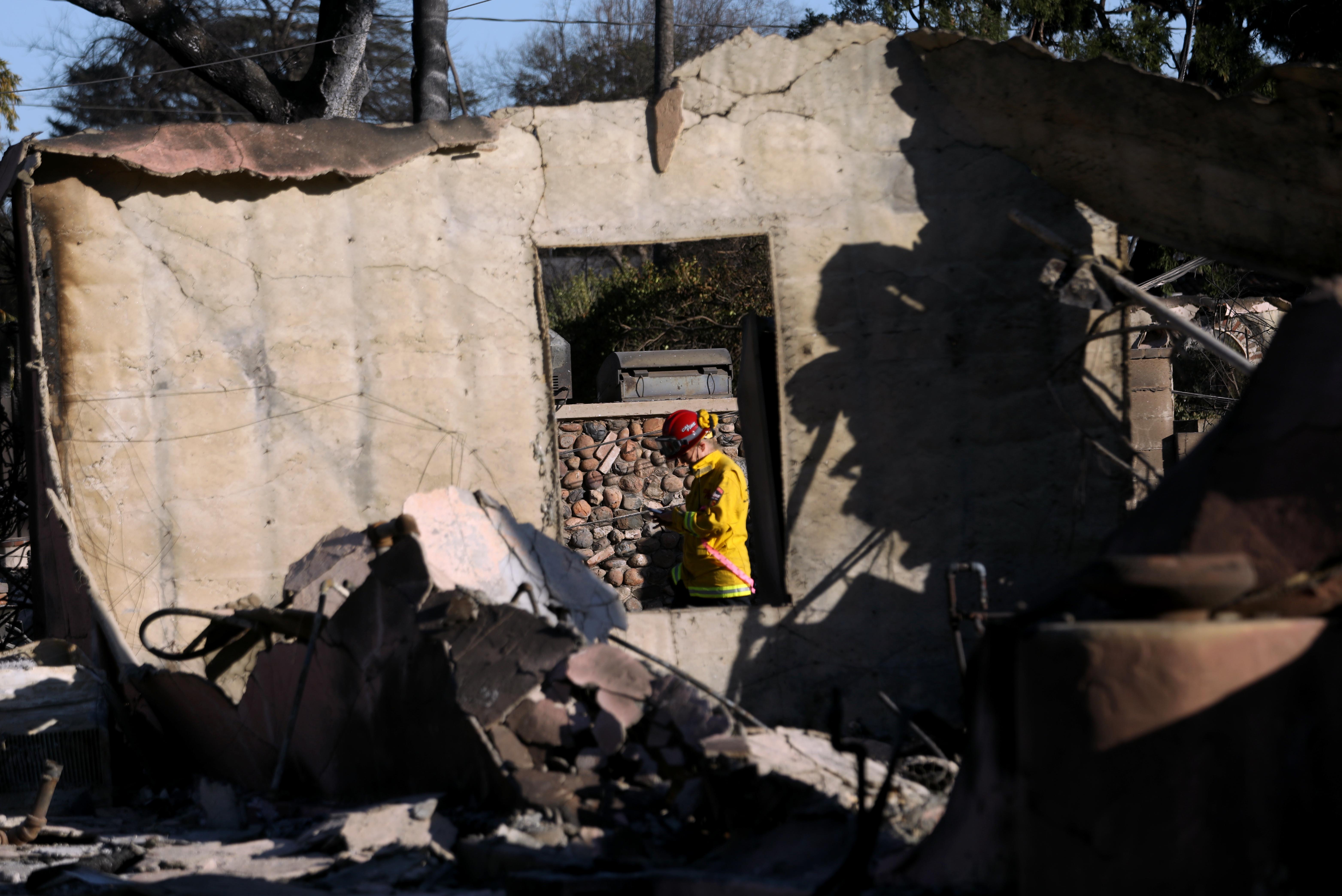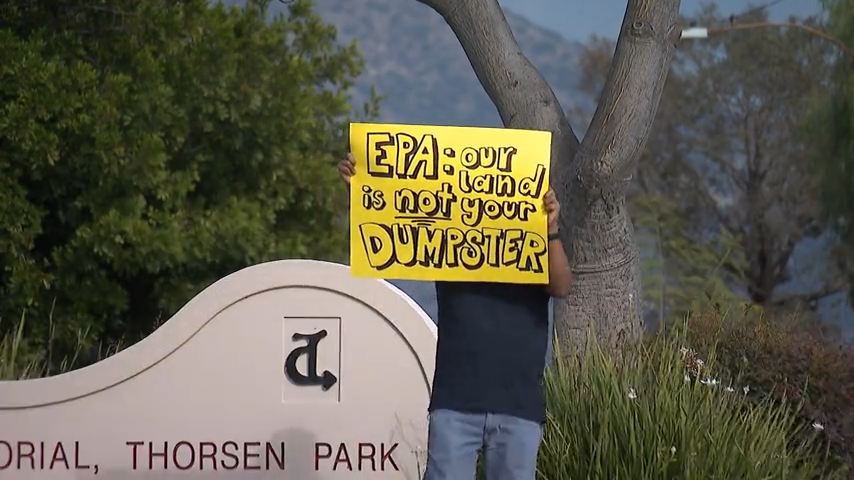Increasing concerns over Calabasas landfill being used as a waste site for the Palisades fire debris led locals to protest. Alex Rozier reports for the NBC4 News at 5 p.m. on Monday, Feb. 17, 2025.
Protesters with signs chanted and temporarily blocked an entrance to a removal site in Calabasas for debris from one of the most destructive wildfires on record in California.
The debris is being transported from properties in Pacific Palisades and other communities destroyed by the January Palisades Fire, the third-most destructive on record in the fire-prone state. The Calabasas Landfill was selected by the Army Corps of Engineers as one site for debris removal.
Stream Los Angeles News for free, 24/7, wherever you are.
Protesters briefly blocked trucks from entering the site Monday morning. At least pickup driver who was not carrying wildfire debris was caught up in the protest blockade.
Get top local stories in Southern California delivered to you every morning with NBC LA's News Headlines newsletter.
Some residents in Calabasas and Agoura Hills said they felt left in the dark about the plan. Calabasas' mayor said he found out about the selection of the site Wednesday.
"The solution is to get the attention of state and county officials, to get the attention of federal officials who can make the decisions that are outside of our control, to help them understand that this landfill is poorly situated next to a residential community next to many residential communities and schools and convince them that health hazards have not been investigated properly," Mayor Peter Kraut said.
Over the weekend, protesters near the location briefly blocked a big rig from entering the area, honked car horns and held signs declaring their opposition to the site. They said they are concerned about what's in the debris and potential impacts on air quality, soil and water.
"If we continue to add all this waste from the fires… there's a lot of health risks, and that's basically what we're protesting against," said protester Ben Oroszlan.
The group Protect Calabasas plans to return to the site Monday morning. Members sent a letter to the Calabasas City Council and the Los Angeles County Board of Supervisors stating their opposition. They plan to attend the council meeting Monday and the board meeting Tuesday.
In the Altadena area, some residents are protesting the use of Lario Park as a removal site in the Duarte area. About 1,500 truckloads of waste per day are expected to be removed from the Eaton Fire area, starting Monday.
The debris removal by the Army Corps of Engineers is part of Phase 2 of the cleanup process after the Environmental Protection Agency complete Phase 1, which involved hazardous waste debris. Residents with properties destroyed by the fire, the second-most destructive wildfire on record in California, could opt into or out of the free Corps program.
The Phase 1 work by the EPA was initially expected to take up to three months. The first Right of Entry forms completed by wildfire victims have been delivered to the Army Corps of Engineers, marking a milestone in the wildfire recovery process.
The forms allow the Corps to begin clearing debris from residential properties destroyed in the fires as soon as those properties are cleared of hazardous materials.
At least 12 people were killed in the Palisades Fire, which burned 23,448 acres, destroyed 6,837 structures and damaged 1,017 others. At least 17 people were killed in the 14,000-acre Eaton Fire, which destroyed 9,418 structures and damaged 1,073 more.
The cause of both fires, which began while the region was under a red flag warning for critical fire danger due to a historic wind event that saw gusts of 80 to 100 mph, remains under investigation.
The UCLA Anderson Forecast released a report Tuesday estimated that the two fires caused property damage and capital losses ranging between $95 billion and $164 billion, with insured losses at $75 billion.



